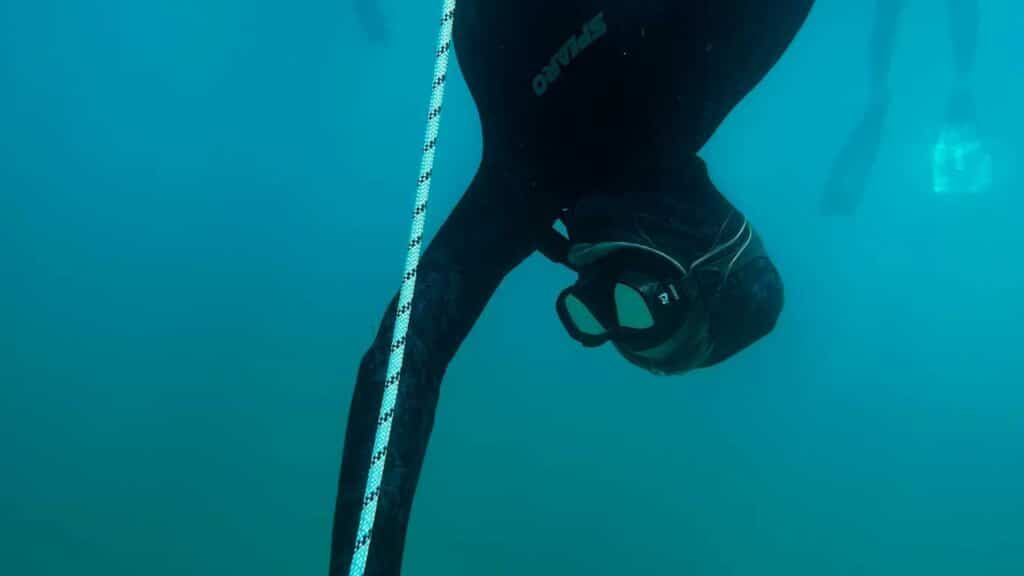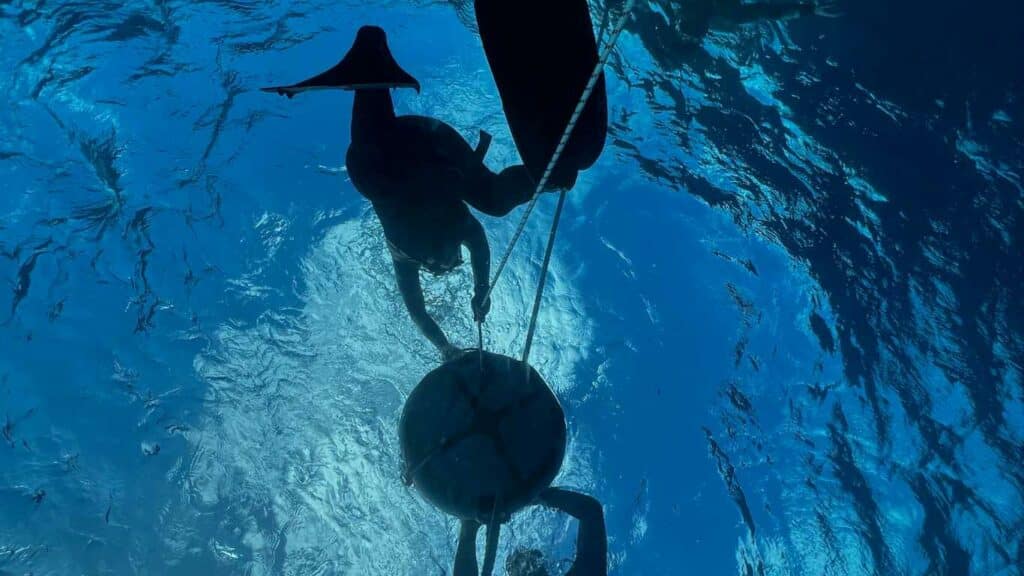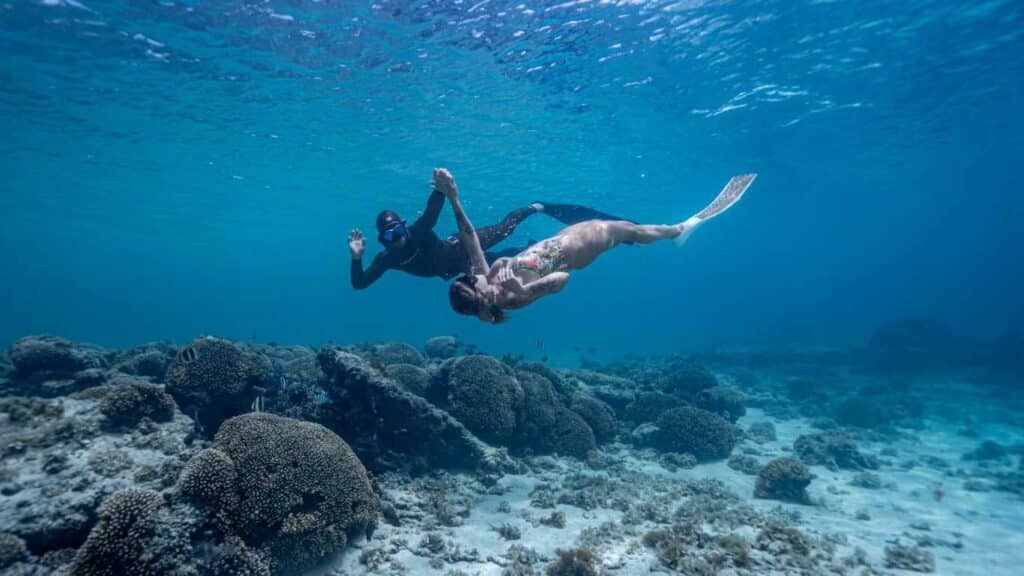In the vast expanse of the ocean, where the surface meets the unknown abyss below, lies a realm of mystery and tranquility: freediving. A sport that defies conventional wisdom and embraces the art of breath-hold diving, freediving is an exploration of the self, both physically and mentally. As an avid freediver, I have come to realize that this sport is not merely about mastering the physical techniques or pushing the boundaries of human endurance; it is a profound journey into the depths of one’s mind.
When it comes to freediving, one might assume that physical strength and rigorous training are the key ingredients to success. While these aspects are undoubtedly crucial, I have discovered that the true essence of freediving lies in the delicate interplay between mind and body. It is an intensely mental sport, where the inner landscape of thoughts, emotions, and fears can either propel you to unparalleled achievements or lead you into the depths of doubt.
It’s fascinating how the strangest dynamics unfold before a dive. There have been days when I felt off, heavy, and bloated, as if I had devoured an entire feast, and yet, those were the days that gifted me with some of my most epic dives.
On the other hand, there were days when I was bursting with enthusiasm, eager to conquer the depths, only to find that the dives felt slightly off, leaving me with a sense of anticipation to do better next time.
It’s a peculiar roller coaster of emotions, and my mind relentlessly tries to recreate the conditions of past successful dives. But as I’ve come to realize, it’s an impossible endeavor. Each dive is unique, influenced by a myriad of factors that cannot be fully controlled or replicated. Accepting this truth has been a significant step in my mental journey as a freediver.

Let me share a glimpse into the turmoil that brews within my mind a few moments leading up to a dive session for a week of training:
Day 1: “Oh no, I forgot my lucky bracelet that says ‘you’ve got this.’ How can I dive well without that talisman of confidence?”
Day 2: “I shared my lanyard with a fellow diver. Now I can’t seem to relax properly. Is this going to affect my performance?”
Day 3: “Which hand was the noseclip on during my last successful dive? I must use the same hand again. But which one, which one?”
Day 4: “Oh no, rest day now… Last time I had a rest day, I couldn’t equalize on the next day”
Day 5: “Left my lucky nose-clip at home. This is a recipe for lousy dives. Everything’s going to go wrong.”
Day 6: “Today, I’m trying a different wetsuit. I’ve never dived deep in this one before. Will it impact my buoyancy and overall comfort?”
Day 7: “I ordered decaf, but it turned out to be caffeinated. Is my heart rate much higher now? Oh man, this is going to be rough!”
Looking back, I can’t help but chuckle at the absurdity of these thoughts, but at the same time, I understand that they are an integral part of my pre-dive ritual. They are the manifestations of the passion and dedication that fuel my love for this sport. And even though I recognize their irrationality, I find myself unable to escape their grasp.
Yet, amid the sea of doubts and uncertainties, there’s one reassuring truth that remains constant in all of my dives: I am there. In that moment, I am present, connected to the ocean, and at one with the elements. It is this realization that anchors me, dispelling the clouds of doubt and ushering in a sense of calm and focus.
As the time of the dive approaches, I stand on the precipice of the ocean, inhaling a big, fat breath. I close my eyes, shutting out the external noise, and turn inward. The water beckons, and as I take the plunge, it’s as if the outside world ceases to exist. The descent begins, and I become attuned to the rhythm of my body and the mesmerizing blue depths that envelope me.
In those moments of solitude, the mental chatter subsides, leaving space for a profound connection with the ocean and its inhabitants. It’s a dance of grace and strength, a harmony between the conscious mind and the primal instincts buried within. Time loses its meaning, and I’m immersed in a state of flow, where each movement is instinctive, and every decision is effortless.

But freediving is not just about reaching depths and breaking records; it’s about introspection and embracing vulnerability. In the depths of the ocean, I confront my fears, limitations, and insecurities. It’s a confrontation that demands acceptance and surrender, as resisting the vastness of the ocean is futile.
One of the most valuable lessons I’ve learned from freediving is that success is not solely defined by reaching the bottom plate or achieving personal bests. True success lies in the willingness to dive into the unknown, to push boundaries, and to acknowledge that every dive, regardless of the outcome, is an opportunity for growth.
With each dive, I unveil a layer of myself, peeling back the armor of the ego and exposing my core. It’s an intimate journey of self-discovery, where the ocean serves as both mirror and teacher. It reflects my strengths and weaknesses, my fears and courage, and urges me to be compassionate towards myself and the journey I’ve embarked upon.
Freediving has taught me that the mind is both a potent ally and a formidable adversary. Its ability to shape reality is awe-inspiring, but its capacity to generate doubt can be paralyzing. Overcoming mental barriers is an ongoing process, one that requires patience, resilience, and self-belief. By cultivating a positive mindset and nurturing a sense of trust in my abilities, I’ve witnessed my dives transcend to new heights.
The mental game of freediving is a continuous evolution, much like the ebb and flow of the tides. It’s a pursuit of mastery that goes beyond the confines of the ocean, permeating every aspect of life. The mindset I cultivate in the depths finds its way into my daily routines, relationships, and challenges. I’ve come to embrace the uncertainties, finding solace in the knowledge that life’s most profound experiences often arise from stepping into the unknown.
As I conclude my dive and resurface, gasping for breath and feeling the rush of accomplishment, I am filled with gratitude. Gratitude for the ocean that has taught me resilience and humility, gratitude for the challenges that have shaped my character, and gratitude for the mental fortitude that has enabled me to embrace the depths within.
To anyone curious about freediving, I urge you to take the plunge, not merely into the ocean’s depths but into the depths of your being. Embrace the mental game, for it is a journey that will transform you in ways you never imagined. Allow the ocean to be your guide, and let your mind be the compass that navigates the uncharted waters of self-discovery. With each dive, you will unlock a new dimension of yourself, and the world will take on a vibrant, profound hue that can only be seen through the lens of a freediver’s soul. So, take that big, fat breath, and embark on the adventure of a lifetime – the adventure that lies within.

In the boundless embrace of the ocean, where the sun-kissed surface meets the enigmatic depths, a world of wonder and tranquility beckons me to venture into the unknown. As a passionate freediver, I have experienced the profound allure of this sport, where the mind and body unite in an intricate dance of grace and strength, and I remind myself of that.
It is a journey of self-discovery that transcends physical limitations, and a mental game that challenges us to conquer fears and embrace vulnerability.
As I prepare for my descent, I indulge in a couple of warm-up dives. They should feel nice and easy, giving you the confidence to go further with no discomfort. During the warm ups, I look for a seamless connection with the water. Effortless and fluid, I sense a calmness washing over me, nurturing the confidence needed to attempt myday’s goal.
I like doing Free Immersion (FIM) for the warm up. If feels like an elegant dance with the deep, a serene and effortless glide into the profound ocean. With each descent, I surrender to the tranquil rhythm of the water, my heart rate harmonizing with the vastness and silence surrounding me. On these dives I focus on my body position, I feel how gracefully I can move and try to relax any muscles that I don’t need to use, especially my legs.
There are many techniques for mentally preparing for a dive, but I find the best one is to visualize your dive. And I don’t just mean visualize you touching the bottom plate; I mean veasualise e-ver-y-thing.
It’s not just personal experience: research in various fields has demonstrated that mental practice and visualization can be extremely powerful tools for improving performance, reducing anxiety, fostering creativity, and aiding in the learning and rehabilitation process. As these techniques continue to be explored, their potential benefits are likely to be further understood and applied in various domains to enhance human performance and well-being.
When I’m already in the water, preparing myself to go, I lay on my back or on my front, breathing through the snorkel for a couple of minutes while visualizing every intricate detail of the dive. I visualize myself completely relaxed, I visualize my lungs expanding more than humanly possible, filling up with air and I especially visualize my last breath: the biggest one ever.
My mind forms a vivid movie-like sequence, where I envision positioning myself relative to the buoy, ensuring a pristine and smooth duck dive if descending in Constant Weight or pull if performing Free Immersion.

The mental projection continues as I picture myself gracefully turning around to face the water and initiating the quick descent. Even in my mind’s eye, I can almost feel the slight pressure on my ears, I visualize my ear canals growing, and the middle ear compensating for the pressure at each step. I focus on my heart, beating slower and using as little energy as possible. I see myself pulling or kicking smoothly down the line. I visualize the muscles that I’m not using to be completely free of tension. I feel the gentle tilt of my head at the 12-meter mark while charging my mouth-fill, and the assuring pep talk I gave myself after reaching the 30-meter mark, where the pressure already starts to build up.
As I descend further into the ocean’s embrace, the sensations in my body are heightened, reminding me of the increasing depth. Nevertheless, I see myself remaining composed and laser-focused on my goal.
If I’m going deep, I even envision, at the 40-meter mark, my throat encountering the vacuum, playing tricks on my mind, attempting to sow seeds of doubt. But I call that unshakable determination with my mind, and I visualize it too. I visualize coaching myself and as I countered these fleeting thoughts, reassuring me that I am precisely where I need to be.
I see myself touching the bottom plate, doing a smooth bottom turn, tugging on the rope, and calmly but with resolve, pulling myself back up and taking my three recovery breaths at the surface, on the safety of the buoy.
Mental practice and visualization, also known as mental rehearsal or imagery, have been studied extensively in various fields, including sports, music, dance, and even medical training. These techniques involve mentally simulating a specific action or activity without engaging in physical movements.
Here are some of the benefits of mental practice and visualization based on scientific research:
While mental practice and visualization offer numerous benefits, it is important to acknowledge that they are not a replacement for physical practice. Combining mental rehearsal with physical training is often the most effective approach to skill development and performance enhancement.
In that fleeting moment of reality and resolve, I take the biggest breath my body can hold, and then I dive. The world around me is transformed, and I become one with the ocean’s enigmatic embrace. My body effortlessly glides, propelled by a combination of technique and the unyielding spirit that resides within me, aided by what I just visualized.
As I journey to the bottom, I try to feel every fiber of my being attuned to the depth and my surroundings. I try to feel it as a dance of synchronization, where the ocean’s rhythm intertwines with the cadence of my heartbeat.
And then, just as gracefully as I descended, I begin my ascent. In the final moments of the dive, I often try to cease my kicking, allowing my body to rise, buoyed by the expanding air in my lungs. A sense of liberation envelopes me, the feeling of weightlessness as I embrace the journey back to the surface.
With a firm grip on the buoy, I take my well-deserved recovery breaths. An overwhelming sense of accomplishment usually washes over me, and I say aloud, “I’m OK!”
In the heart of the ocean’s embrace, I found an unyielding connection with my innermost being, embracing vulnerability and challenging myself to rise above limitations. This is the essence of freediving, where the physical and mental merge to create an extraordinary symphony of human potential.
As I surface from the depths, a profound sense of gratitude often takes over me. Gratitude for the ocean that teaches me resilience and humility, gratitude for the challenges that have shaped my character, and gratitude for the mental fortitude that enables me to embrace the depths within.
To anyone intrigued by the world of freediving, I extend an invitation to explore its depths – both within and without. It is a journey of self-discovery, a dance with the ocean, and a testament to the indomitable human spirit, where we need to leave our egos aside and quieten the mind to thrive.
Embrace the challenge, for it is within the depths that we uncover our true selves and realize the vast reservoir of courage and strength that lies within each of us. So, with a big, fat breath, take the plunge and embark on the adventure of a lifetime.
